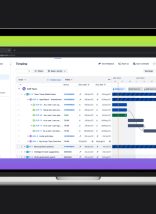A large web design and development project requires a great deal of planning. In fact, the more complex the project is, the more important it is to have that plan of action worked out fast. The plan needs to be clear with a distinct goal. It must be able to move all parties involved from the initial concept to a successful launch. This plan shouldn’t be a simple checklist of activities. Instead, it should detail responsibilities and timelines, as well.
At Atlantic BT, we see the various phases of web design projects as milestones. These represent natural points in the process where it makes sense to step back and see what we have. We can combine materials and evaluate the work in front of us. After agreements and adjustments offered from all team members, we can move forward. Milestones makes it easier for everyone involved to see the ongoing progress made. That can be an important factor to communicate. It reminds everyone that their work and time isn’t vanishing into nothing. It also helps keep everyone and everything on the same page. Especially when there are hundreds of minor details to look after.
We’d like to introduce you to a few ideas about milestones in web design projects. You can put them to work as you oversee the development of your organization’s website. By breaking down the process into steps, the project becomes easier to access. You can build your team’s confidence as they see their accomplishments in action. The Importance of Milestones
There are many values in establishing a set of planned milestones. The biggest one, though, is that they let you track your progress from the beginning. The initial discovery and brainstorming phase can be milestone 1. Each level of design for the program will be its own milestone. You can apply this tracking process throughout the entirety of the project.
With regularly-spaced milestones in place, you’ll be able to plan ahead more efficiently. The next point where you’ll need to give feedback to your creative team, will be clear. You’ll also develop a good sense of the project’s pace and how it continues to progress. This is helpful when you’re keeping an eye on those deadlines. You can even use milestones to keep executives and stakeholders on track. They’ll be able to focus on deliverables as they arrive.
Making Progress Without Micromanaging
One key advantage of scheduling milestones is that they allow clients to review new work (including previously-requested revisions) at regular intervals. That can reduce the strain of constant back-and-fourth communication between developers and stakeholders. At the same time, it gives a creative team the freedom to work without feeling as if they are being micromanaged.
Of course, in order for these benefits to be realized, milestones need to be scheduled often enough to keep things moving. But, balance is important. Don’t schedule them so frequently that they become a distraction.
Milestones as a Time-Saving Tool
Another often-overlooked benefit of using milestones is that they define feedback periods. Web design clients can be prepared to offer notes, feedback, and requests for revisions. Executives can take the time to evaluate what they’ve seen, and even solicit opinions from users and colleagues. The process will be less stressful because they’ll know they won’t have to go through this on a daily or weekly basis.
The result is a structure that puts everyone on equal footing. It is clear to the entire team what is expected of them, creative work isn’t being duplicated, and the flow of communication is improved.
Need a Creative Team That Can Handle Institutional Web Design?
Building a large website – like one needed for a corporation, university, or government agency – requires experience, technical skill, and the ability to manage workflows and deadlines. You’ll get all that and more when you hire Atlantic BT in North Carolina. Contact us today to schedule a consultation about your project.






